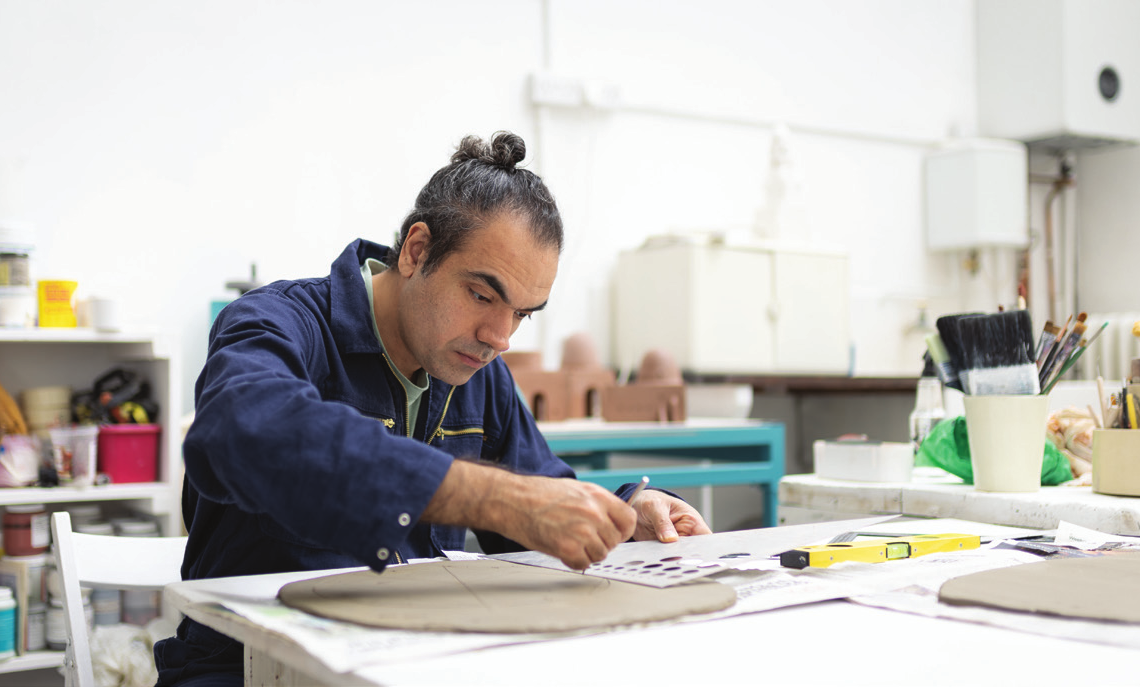Born in Isfahan in 1979, Shahpour Pouyan lives and works between London, New York. Skilled in painting, sculpting and ceramics, he invites viewers to reflect on power and the threat of war, and calls attention to pressing world problems. This interview is commissioned by Lawrie Shabibi for Canvas, conducted by Dr Penny Dan Xu, who is an independent curator, writer and translator.
Dr Penny Dan Xu: You are known as a ceramic sculptor, but you were first trained as a painter.
Shahpour Pouyan: Yes, I did my bachelor and first master degrees at Tehran University of Art in painting and, later on, continued for a second Masters at Pratt Institute in New York. However, I would say my most important education was outside of the art classroom. Soon after I started my first degree, I came to realise that there was not much I could learn from the university. Instead, I took a philosophy course at the Iranian Institute of Philosophy, was taught painting skills by an acclaimed craftsman, and also learnt armour-making from other craft masters.
If I remember correctly, you also received pottery training outside of a formal art institution?
Yes, that was in 2013, after I graduated from Pratt Institute.
What inspired you to take up pottery?
At that time, I found ceramic to be the best medium to express my ideas. In 2013, I was developing a project called PTSD. I’d found a leaflet about Post-Traumatic Stress Disorder (PTSD) in the Pratt health centre. It was my first time learning about this disorder and I recognised that I have it. I was born in the year after the Iranian Revolution and grew up during the Iran-Iraq war. My father was a military officer and a navigation and electronic engineer working on F14 jets for the air force, so we lived in a military complex in Isfahan. The war was in close proximity, and this traumatic experience has stayed with me.
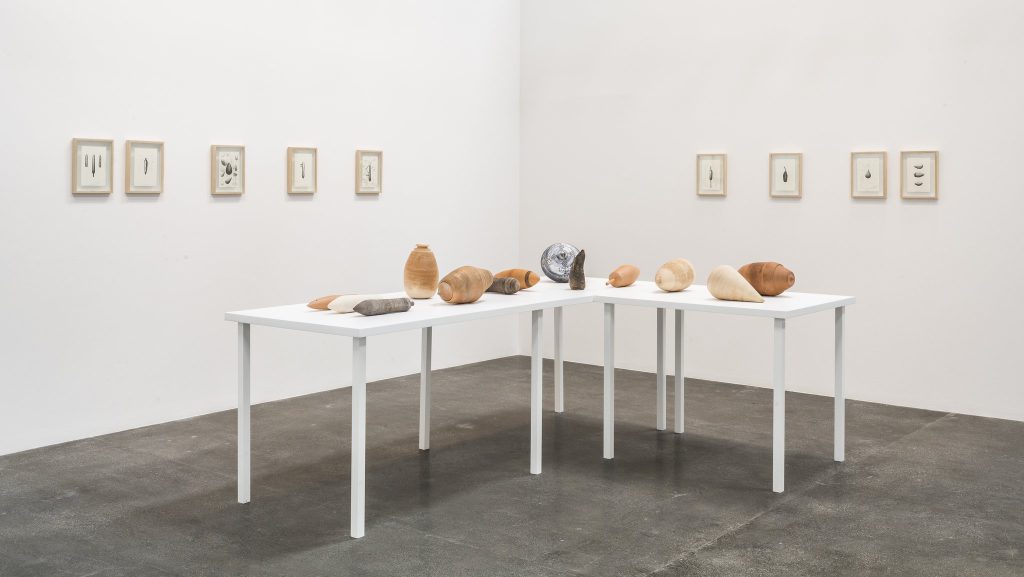
According to the leaflet, the disorder could be treated by simply practicing healing and meditative activities such as pottery. Inspired by this advice, I decided to make a series of ceramic sculptures in the shape of shells and nuclear reactors, as a way of responding sarcastically to this proposed treatment. I found a ceramic master, Guangzhen Zhou, based in San Jose, California, and asked him to help me realise this project and teach me pottery. I moved to California and worked in his studio every day for six months under his supervision. Zhou gave me a great fundamental training, and my time with him has proved invaluable.
Just like a master–apprentice training model in the old days. Can you tell me more about what work you made during those six months?
The first pottery piece I ever made was Failed Object (2014), a set of sculptures that are akin to archaeological ceramic vessels but seem to have no clear function. They are hollow inside, yet the tiny holes in their bodies do not give viewers visual access to the interiors. They are metaphors for culture and people who are ancient, rich, mysterious and potentially threatening. Over time, as my skills improved, I was able to make the shell-shape sculptures called Still Life (2014), and the dome sculptures referencing the threat of nuclear weapons, which are titled Tzar Trauma (2014).
Starting from your 2017 solo exhibition in Paris, We Owe This Considerable Land to the Horizon Line, your work often refers to architectures from different cultural traditions. You are perhaps one of the few artists who builds a connection between ceramic and architecture. Where does this idea come from?
A long time ago, in the National Museum in Tehran, I came across a prehistoric architectural model made in clay. An ancient architect must have made it to demonstrate his or her design to potential customers. I was deeply enchanted by the little clay model. At the same time, buildings in many civilisations were initially made of brick, which is essentially clay. The form and the medium are innately connected, and I am interested in transforming this historical connection to contemporary art.
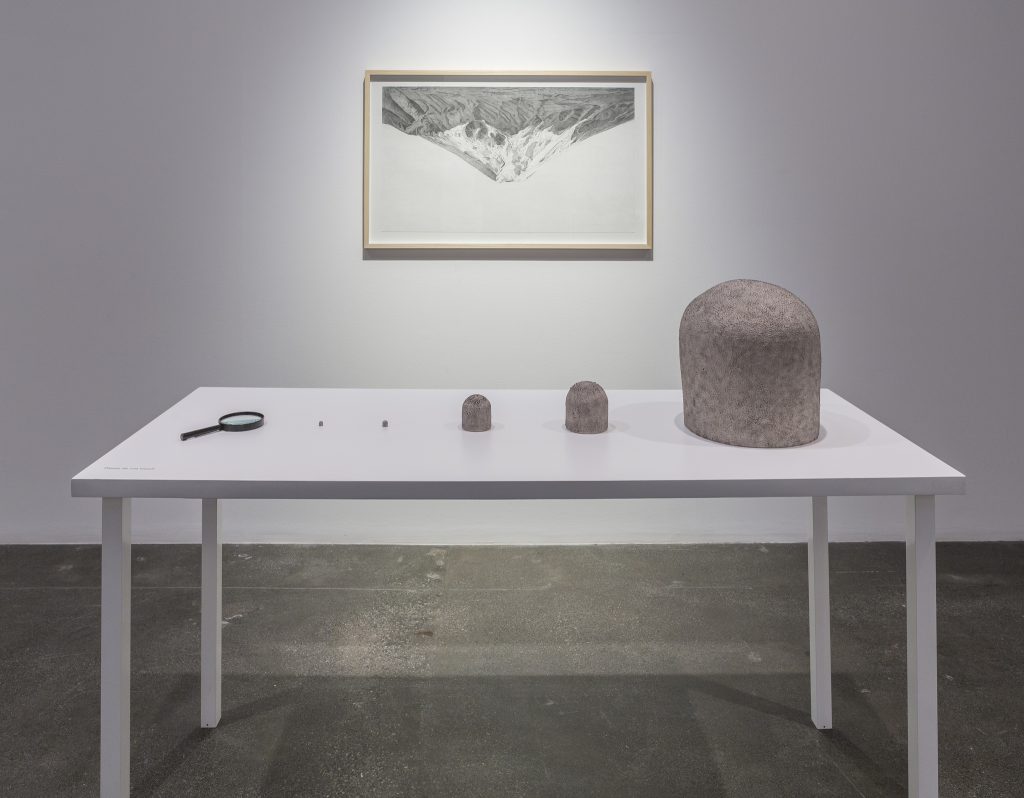
Why is architectural form so important to you?
It may be because of my educational background and strong interest in mathematics and physics. There is something I can trust about architecture. It is built upon solid facts and limitations set by maths, geometry and gravity. It is a rich and symbolic language that I can use to talk about concepts that really matter to me. Take a buttress, for instance. It is an amazing structure which symbolises conservation and caution, an extra hand that helps stop a wall from falling apart. I can’t find equivalent elements in visual art that bear these layered meanings. The difficulty, however, is always in how to employ these elements in my works and how the audience might decode them and understand the meaning of these elements in my visual vocabulary.
The work My Place is the Placeless (2017-ongoing), which showed as part of the exhibition Strange Clay: Ceramics in Contemporary Art at Hayward Gallery earlier this year, is a symphony of ceramic architectures. It demonstrates your mastery of this medium. What inspired you to make this piece?
My Place is the Placeless has two editions, one with 33 ceilings and the other one with 15. This work is based on a DNA ancestry test I did back in 2015. To my surprise, the test result linked me to a far broader geography, from Central Asia and South Asia, even to Scandinavia. I was amused by the result, and sat with it for nearly two years before deciding to make it into an artwork. I chose to represent the nations mentioned in the test in the shape of domes from their different traditional architectures.
A dome represents its nation’s cultural identity and pride, and their construction has always been a symbol of sophisticated engineering and technology. However, to me, the dome is more a symptom of human arrogance, egotism and imperialism.
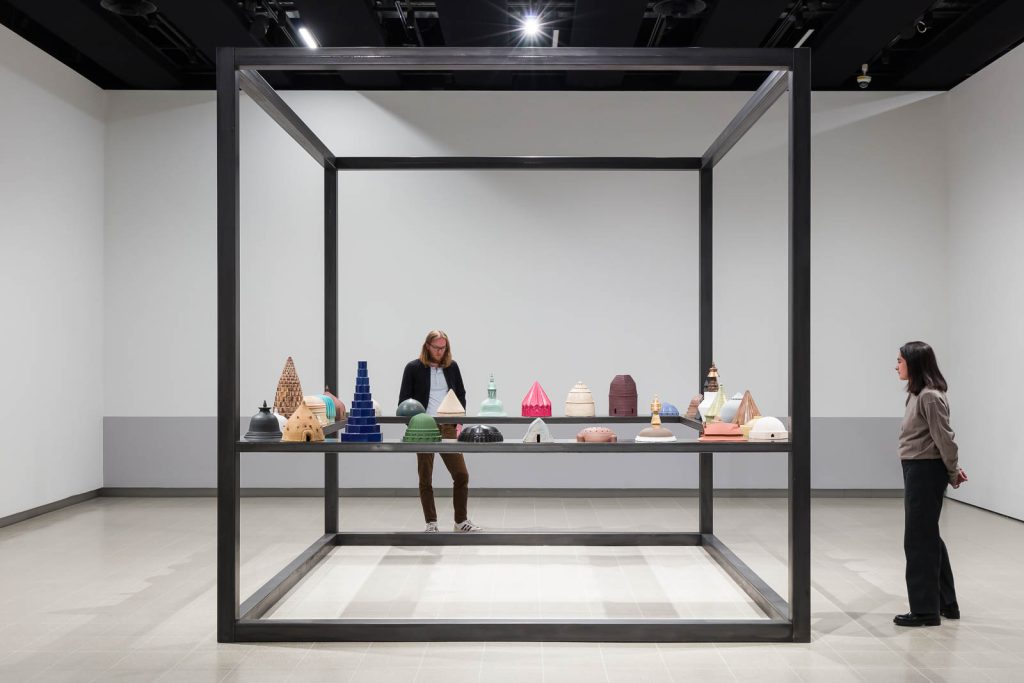
I was at the opening of the exhibition and noticed how visitors who got close in order to appreciate your work stood in awe at the meticulousness and beauty of the domes. Can you share the process of your art making?
Well, to a certain extent, I work like an architect. I start with making many drawings. The first draft always looks very simple, with a strong sense of abstraction and form, just like the first draft of an architectural design. For My Place is the Placeless, I carried out a thorough study of the classic architectures of the different nations and gradually formed a list of the ceilings that I would like to realise. Then, based on my experience, I calculated how many pieces were required to construct the complex structure. It is extremely difficult to make small pieces from clay as they require a great level of precision. The final result – the domes – is in fact a delicate balance of many small components. Apart from this, finding the right glaze is another complicated process. Clay is such an enchanting yet unpredictable material. I don’t always know what will come out until I open the kiln.
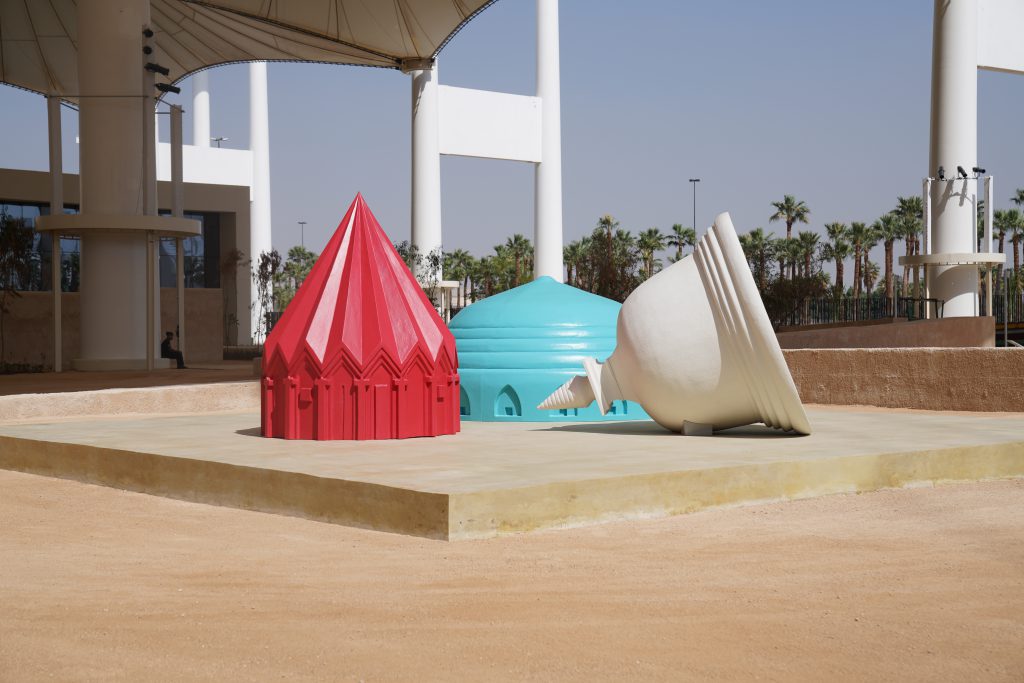
My Place is the Placeless investigates the confluence of personal experience and societal history. Another project you developed last year, Skyhigh is My Place, stems from the story of your father. Can you unfold the approach behind this project?
Skyhigh is My Place was my solo exhibition at Museum Dhondt-Dhaenens and from November 2021 to January 2022. It was a site-specific project, and when visitors walked into the museum they saw a boxy, 1960s-style tower with strip windows hanging upside-down in the courtyard patio at the middle of the exhibition space. The strong smell in the room helped them notice that the tower was surrounded by an expanse of wheat. The tower was a scaled-down reproduction of the air control tower at the military base in Isfahan where my father used to work. In 1979, when the revolution happened, my father and his colleagues were working at their base. They were very positive about the changes that were happening, filled with hope and enthusiasm. One day, somebody said to my father, “We have a strong military, no one dares to attack Iran. But we don’t have enough wheat. Why don’t we do something about that? Let’s start farming. We can grow enough wheat to help make Iran independent.” So, they got together and started to plant wheat at the military base.
It sounds surreal.
It was! They would go out farming early in the morning, then spend the day doing their job, and work on the farm again later in the evening.
How do you feel now about what they were doing?
When I first learned about this story, I thought they were so innocent. They acted entirely out of goodwill. No one gives any credit to them, no one talks about it. Many stories of these kind are forgotten and lost in history, buried by the subsequent series of political events. But through my father’s story, for the first time, I felt I understood them and their generation.
Seeing what is currently happening in Iran, they must feel very frustrated.
The frustration came much earlier. The land they were farming was not fertile, so they could not harvest much. It’s as if the poor harvest was a metaphor of reality, the elimination of freedom, and of course the new era of censorship that came after the revolution led Iran in another direction. The subsequent eight years of war [with Iraq] did not give them any spare time to farm. As a result, the promise fell like an upside-down tower, remaining an unrealised dream.
In the publication for this exhibition, you refer to the story as a “poetic failure”.
Every failure is poetic. However, I might have over-romanticized failure. It can also be deadly. We are still suffering from this failure today. Moreover, in the exhibition I tried to stress the issue of wheat. It’s such an important strategic crop, but unfortunately that message was not explicit to the audience. A month later, the Russia-Ukraine war broke out, is still ongoing, and the ensuing shortage of wheat has put some nations at risk of famine.
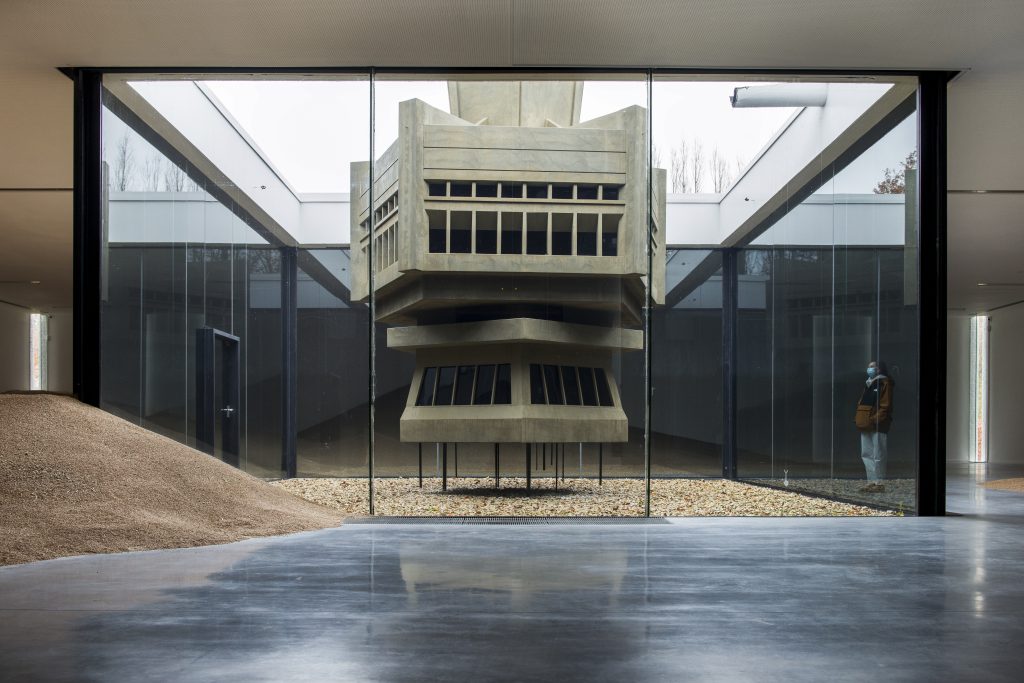
Many of your projects have the same quality. In your Miniatures series (2008–ongoing), you meticulously repainted a selection of miniature paintings but removed all figures – the lovers, the kings, the warriors, the narrative basically. The famous paintings were turned into empty scenes, cityscapes without a trace of humans. You have mentioned elsewhere that your idea came from a road trip around Iran, seeing the deserted palaces and ruined mosques that used to be the background of the stories within the miniature paintings. Suddenly, Covid-19 and lockdown rendered the whole world into an empty place and the paintings you created over the last 10 years were brought into the spotlight. At the same time as Skyhigh is My Place, you had another solo show, at Galerie Nathalie Obadia in Brussels. In this exhibition, you made two gargoyles, which stuck out from the high wall in the gallery space. You used them to caricature the two sworn enemies of the ancient Western world, Xerxes and Hannibal. However, one of them was actually modelled after the face of Vladimir Putin. In a subtle way, you expressed your deep concern about this man’s intensified power. Looking at the gargoyles a year later, it gives me the chills. You were like a concerned prophet!
As far as miniature paintings are concerned, when I remove the figures – which I call ‘freeing’ the paintings from their illustration elements – I was looking to the current condition of many historical sites in Iran. It was difficult for my audience to feel the relative senses of emptiness and abundance, but when the pandemic hit the world, a similar experience occurred. I remember someone told me that when she saw an image of an empty Times Square in New York it reminded her of my miniature paintings. As for Putin, adding his face to Hannibal’s gargoyle was more like a joke, a reference to the arch-enemy that is always needed by the West to unify all the various factions. However, it turned into a serious matter in a couple of months. If you were following the tensions between Russian and the West, it was not difficult to see what was going to happen next!
From PTSD and My Place is Placeless to Skyhigh, your artworks are loaded with layers of different meanings, stories and reflections, but these are not always obvious at first sight.
I believe good art should be an enigma. When I was little, I was very much drawn to Western classical music but, as a child, I didn’t understand it at all. Over time, I learnt about the composer, the content, the structure etc. Every time I return to classical music, I feel that I have uncovered another layer of it. The journey of discovery seems to have no end. The aesthetic of ‘obscurity’ is also an important component in Persian literature. The poetry of Hafiz is a great example, as his writing is inclusive and open to interpretation. Different interpreters read varied meanings in the same poem. It is like twilight, the most beautiful time of day, a false dawn that is deceiving, delusional and fanciful. There is a moment when you are not certain that the light has been truly ended by the darkness, but at the same time we know every twilight is impregnated with a new light. In Persian we call twilight Grog-o mish or ‘Wolf and Ewe’, suggesting an insecurity of meaning.
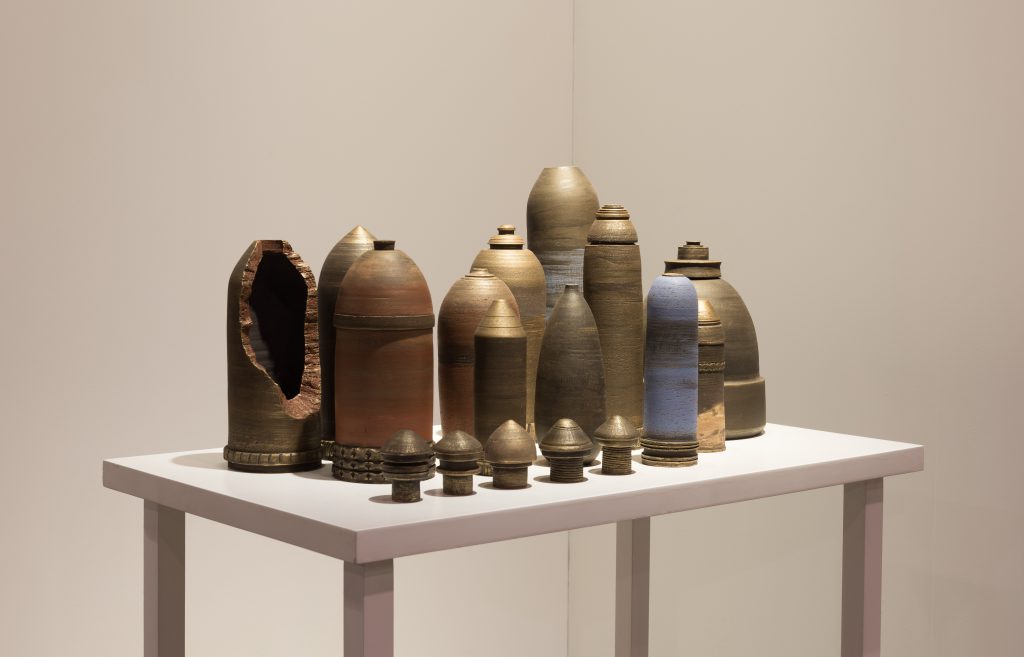
Your earlier work carries your fear of war, concern for the future and anger about reality. But I sense that, in recent years, your art practice has become less confrontational. As if your edges are more rounded?
I am probably becoming more mature in my practice.
But you are still angry?
I am still angry, but I understand the world a bit better now.


